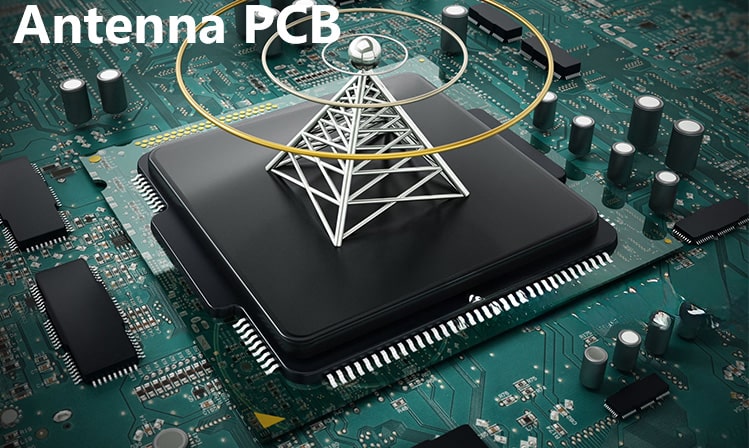Key Points for Antenna PCB Manufacturing
PCB antenna refers to the part of the PCB used for wireless reception and transmission. With the advent of 5G networks, more and more electronic devices require antenna PCBs. The antenna is a sensor that converts the high-frequency current of the transmitter into spatial electromagnetic waves during transmission and sends it to the receiver. A good antenna PCB can optimize the communication distance.

Antenna PCB data should have high frequency, and FR-4PCB usually does not have good performance. The boards commonly used for antenna PCB manufacturing are Rogers PCB, Teflon PCB, Arlon PCB, Taconic PCB, Nelco PCB, FR-5 PCB, DuPont PCB, Isola PCB, etc.
What are the classifications of antenna PCBs?
Antenna PCBs are divided into two categories: external antennas and internal antennas:
The length of the external antenna is about one-quarter of the wavelength of the electromagnetic wave, so the lower the signal frequency, the longer the antenna length. The 433MHz wireless serial port commonly used in the Internet of Things also uses an external antenna. Some antennas, such as one-eighth or one-sixteenth of the wavelength, can also be used, but the efficiency will be reduced.
For small products, such as mobile phones, wearable designs, smart homes, etc., built-in antennas are usually used, which have high integration, beautiful product appearance, and slightly lower performance than external antennas.
Built-in antennas include internal true PCB antennas, FPC antennas, WiFi antennas, etc.:
1. Internal true PCB antenna: a conductor directly arranged on the PCB circuit board, widely used in single-band module circuit boards, such as Bluetooth modules, WIFI modules, ZIGBEE modules, etc.
Advantages: no cost, no need to debug again after tuning.
Disadvantages: only applicable to a single frequency band, such as Bluetooth, wif. The performance of PCB antennas from different batches will vary.
2. FPC antenna: equivalent to pulling out the antenna line on the PCB board and using other external metals to make antennas, usually used for low-end mobile phones and smart hardware products with complex frequency bands.
Advantages: applicable to almost all small electronic products, good performance and low cost.
Disadvantages: each product needs to be debugged separately.
3. WiFi antenna: refers to a communication antenna with an operating frequency between 2.4GHz and 2.5GHz, mainly used for WLAN, Bluetooth, etc. Wifi antenna PCB has strict requirements for PCB manufacturers.
What are the key points of antenna PCB manufacturing?
1. If the cost and size are not considered, PCB antennas can choose other antennas, such as patch antennas (small size, medium efficiency, medium cost) or external whip antennas (large size, high performance, high cost).
2. The dielectric constant (Dk) of the circuit laminate is the primary factor that many PCB antenna engineers should consider when designing microstrip antennas.
3. For PCB antennas, thicker PCB circuit board data is more likely to radiate energy outward.
4. Compared with the ceramic or PTFE dielectric of the PCB laminate, the surface roughness of the laminate copper foil has an impact on the antenna. At the same time, for circuits with the same dielectric material, the rough copper foil surface has a greater impact on the antenna than the smooth copper foil surface.
5. After surface plating, PCB antennas and other passive devices made of PCB data will also affect the performance of PCB antennas.
6. The presence of any form of ionic contaminants or residues in the circuit may lead to poor antenna performance.
7. The etching quality of the PCB circuit board is also very important to the performance of the antenna PCB.
As a carrier of high-speed signal transmission, antenna PCB plays an increasingly important role in wireless communication and other fields. PCBAMake has a stable production process to produce antenna PCB. If you need antenna PCB manufacturing, please contact PCBAMake Technology.







